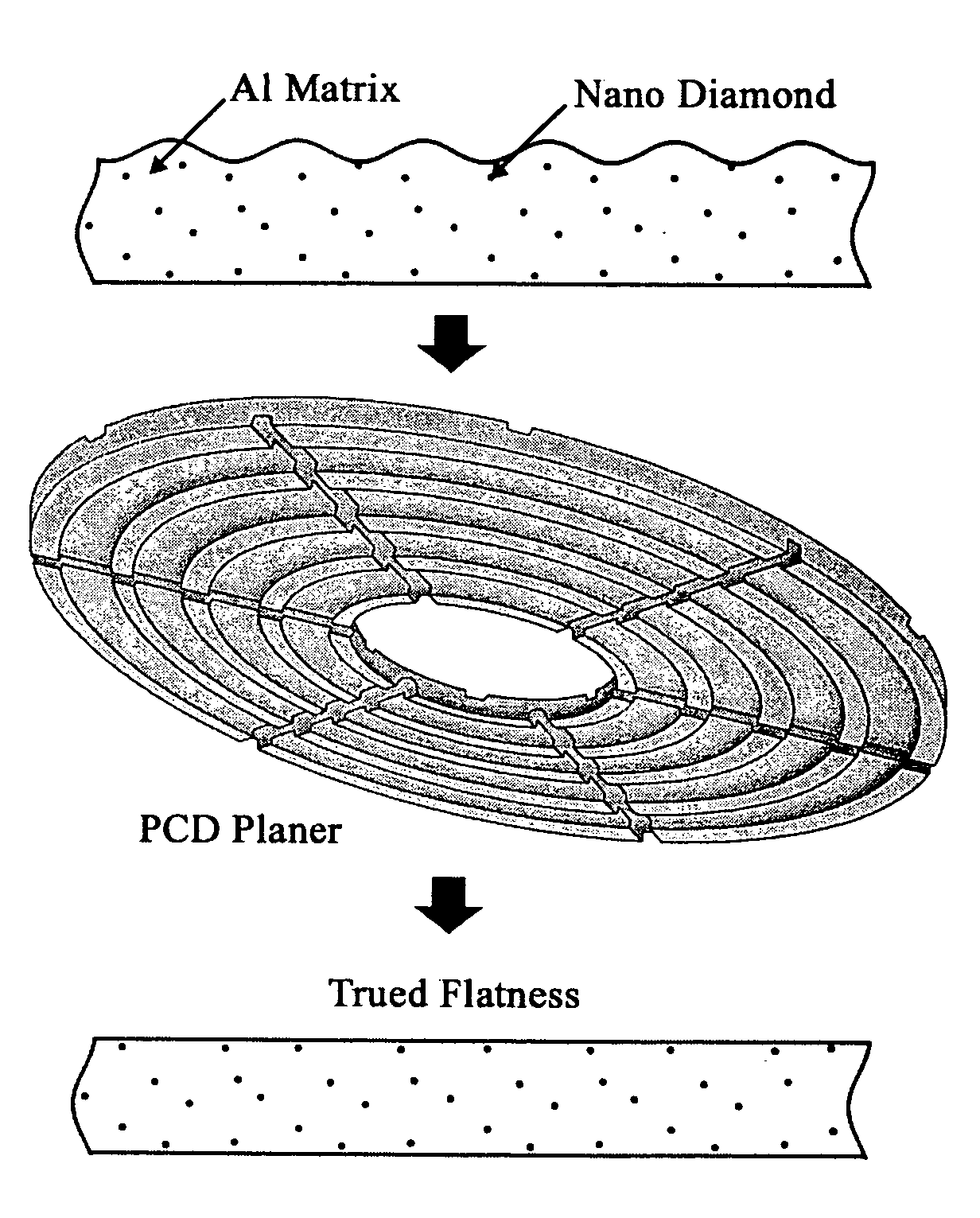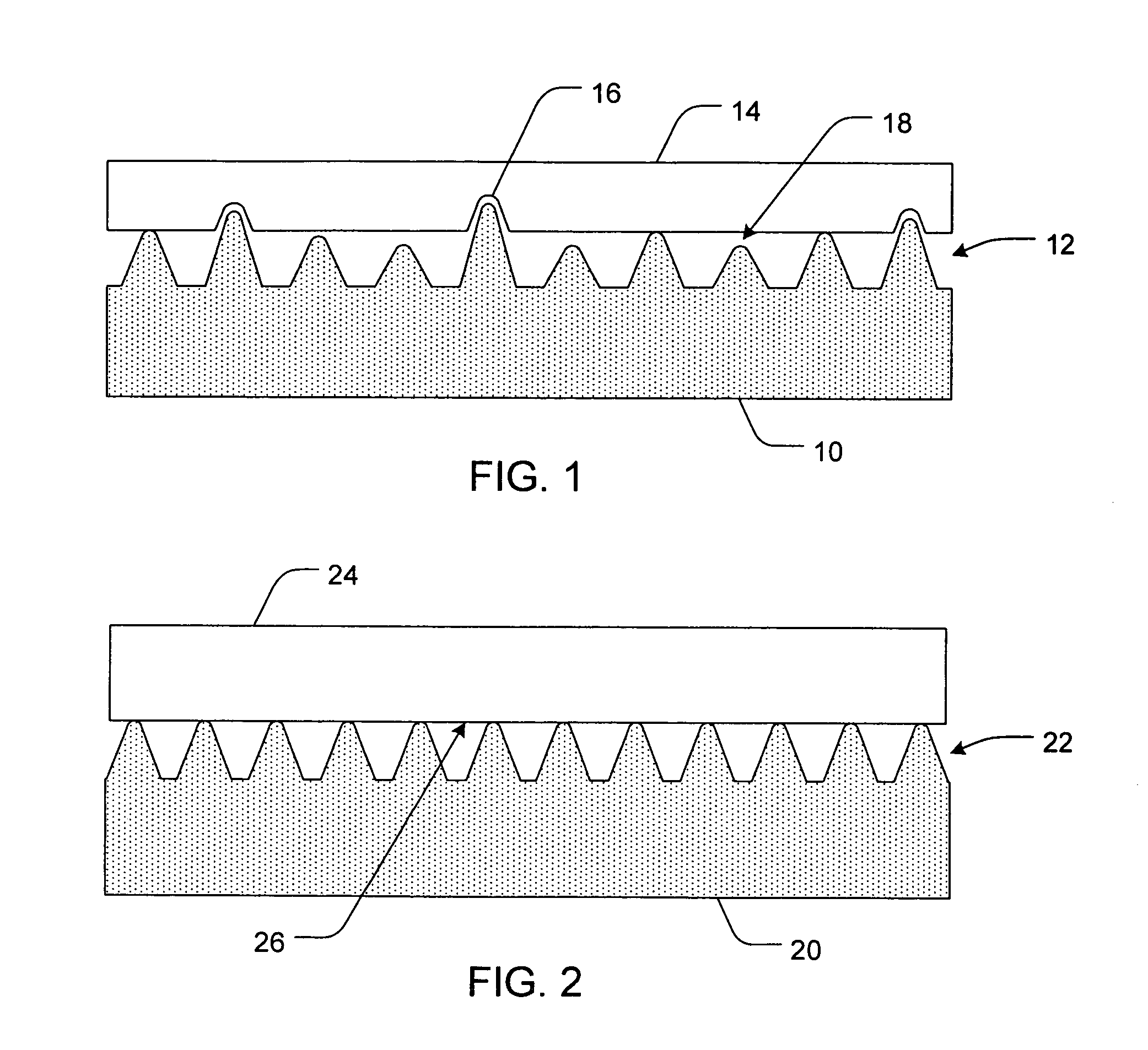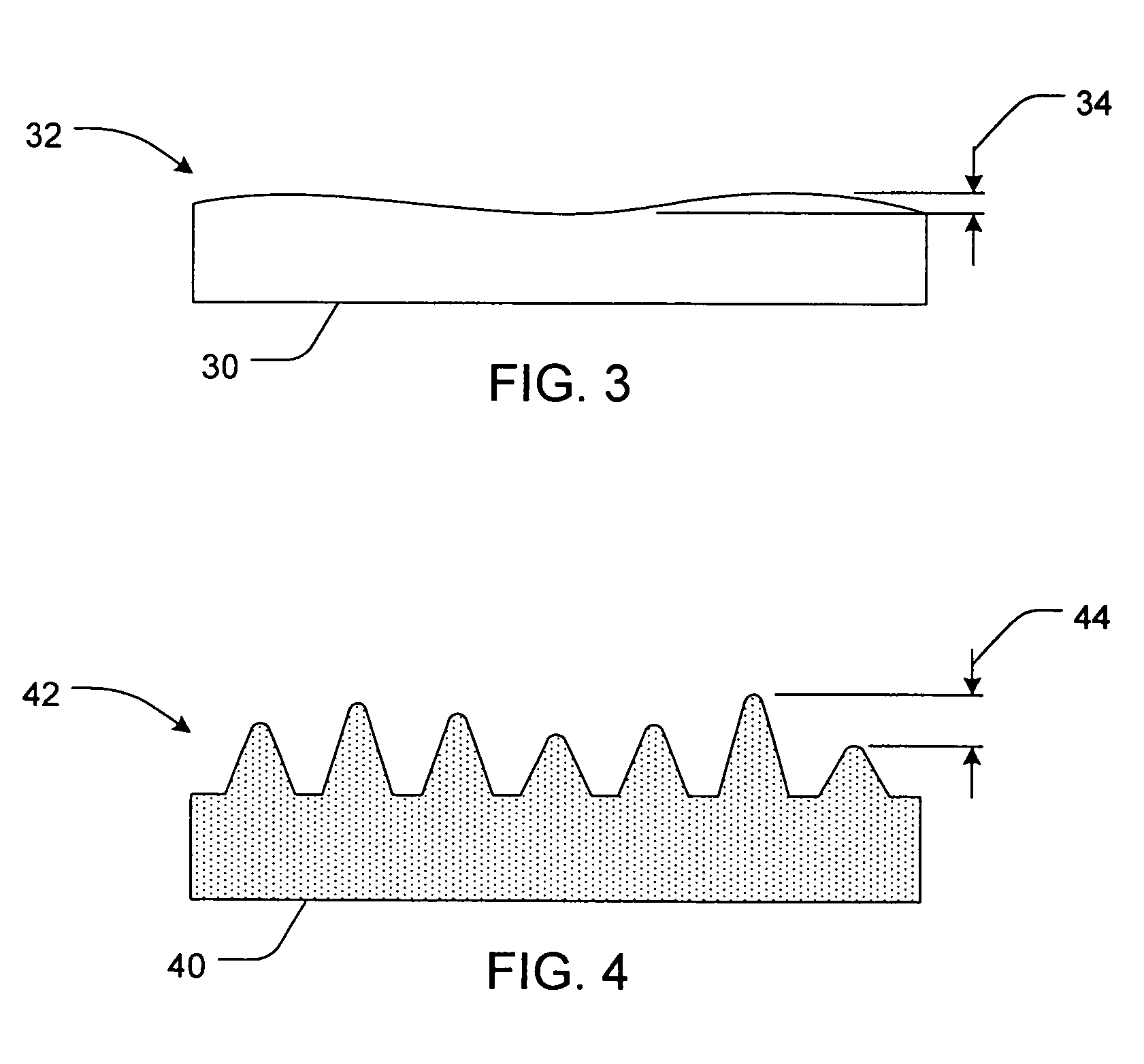Tools for polishing and associated methods
a technology of tools and slurry, applied in the field of polishing tools, can solve the problems of accumulating polishing debris coming from the workpiece, abrasive slurry, pad dresser, etc., and achieve the effect of facilitating polishing
- Summary
- Abstract
- Description
- Claims
- Application Information
AI Technical Summary
Benefits of technology
Problems solved by technology
Method used
Image
Examples
example 1
[0071]Nano diamond particles of Tomei PM powder (50 nm) are mixed in with Al powder and melted in vacuum to form a mixture. The mixture is diluted with agitation in a pool of molten Al—Si alloy under protected atmosphere. The resulting alloy is cast to form a thin flat layer that is rolled to a uniform thickness. The layer is then cut to form a circular disk. The disk is mounted on a rotating platen and trued with a PCD planer to a roughness (RA) of less than 5 microns. FIG. 5 shows a depiction of a starting surface (top), a PCD planer (middle), and a final trued surface (bottom). A PCD dresser is used to create uniform asperities of about 10 microns. FIG. 6 shows a depiction of a starting surface (top), a PCD dresser (middle), and a dressed surface (bottom). This textured pad is used to polish a silicon wafer to a mirror finish of 3 nm RA.
example 2
[0072]A stainless steel sheet is flattened and mounted on a rotating platen. The surface is trued with a PCD planer and subsequently dressed with a PCD dresser to create uniform asperities of about 10 microns. This textured steel pad is used to polish a copper coated print circuit board to achieve mirror finish of 1 micron RA.
PUM
| Property | Measurement | Unit |
|---|---|---|
| surface roughness RA | aaaaa | aaaaa |
| RA | aaaaa | aaaaa |
| RA | aaaaa | aaaaa |
Abstract
Description
Claims
Application Information
 Login to View More
Login to View More - R&D
- Intellectual Property
- Life Sciences
- Materials
- Tech Scout
- Unparalleled Data Quality
- Higher Quality Content
- 60% Fewer Hallucinations
Browse by: Latest US Patents, China's latest patents, Technical Efficacy Thesaurus, Application Domain, Technology Topic, Popular Technical Reports.
© 2025 PatSnap. All rights reserved.Legal|Privacy policy|Modern Slavery Act Transparency Statement|Sitemap|About US| Contact US: help@patsnap.com



